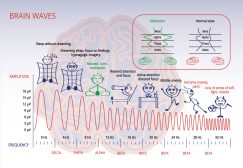Definition
noun
A type of exudate that is bloody because of the large component of red blood cells released from ruptured blood vessels
Supplement
Exudate is a fluid formed and released as a response to a damaged tissue. In most types of tissue injuries, the healing process begins with mast cells releasing histamine that dilates local arteries and increases the permeability of local capillaries. As a result, more blood is delivered to the injured tissue and fluid accumulates locally. Inflammatory cells such as neutrophils and phagocytes move to the injured tissue as well in order to destroy microorganisms that might have crossed when the skin barrier is disrupted. Thus, exudate is a typical part of the healing process. However, there are instances when the exudate contains cells that are greater in number than they normally are. One example is an exudate comprised mainly of leukocytes particularly when there is severe infection; that exudate is described as purulent. Another is when the exudate contains high amounts of red blood cells as a result of ruptured blood vessels or from a trauma to the wound bed. A bloody exudate is termed hemorrhagic exudate.
Word origin: hemorrhagic, from hemorrhage from Latin haemorrhagia, from Greek haimorrhagia meaning bleeding violently (from haima (blood) + rhage (a breaking) + –ic + exudate, from exude meaning to ooze,” which came from the Latin exsūdāre (to sweat out, i.e. ex– meaning out and sūdāre meaning to sweat)
Variant(s):
- haemorrhagic exudate (mainly British)
Also called:
- sanguinous exudate
Compare:
Related term(s):
- exudate cell
- exudation







